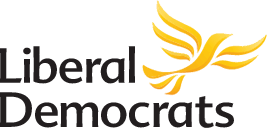Introduction
We have seen what brought about the European Union project, when it started, key dates during its history and how many member states there now are, but how does it operate? The European Union is based on the rule of law, which means that every action taken by the EU is founded on treaties that have been approved voluntarily and democratically by all EU member countries. A treaty is a binding agreement between EU member countries and sets out EU objectives, rules for EU institutions, how decisions are made and the relationship between the EU and its member countries. Treaties are amended to make the EU more efficient and transparent, to prepare for new member countries and to introduce new areas of cooperation, such as the single currency.
The Idea of Europe
Martin Schulz is a German politician and has been the President of the European Parliament since 2014. He is quoted as saying that the idea of Europe is for member states to work together to;-
- Strengthen each other
- Better manage challenges
- Accord cross border co-operation
Threats and Challenges
There are numerous threats and challenges for the European Union that evolves over time. Here is a list generated in 2016,-
- The Four Freedoms
- External borders due to Syrian immigration
- Acquis Communautaire. The key player forming the EU was France and consequently its political model was based on French law, which is heavily bureaucratic
- Centralist governmental administration
- Common currency. The area where common currency has been adopted within the EU is known as the Eurozone. It was a good idea but incorrectly executed. There are those who say that a common currency model can only work when there is a political & fiscal union between the member states, a United States of Europe. Currently there is too much of a trade imbalance within the EU, between poorer countries such as Greece and the wealthier ones such as Germany. The EU system is designed to deliver equality and so over time the trade imbalance may disappear, but a concerted effort has to be made by the wealthier member states to base their manufacturing facilities in the poorer areas in order to speed up this process.
- Democratic Accountability – Voting system – Since the UK has the only FPTP system it can produce large fluctuations in British EU representation each electoral cycle
According to Martin Schulz, the primary challenge is to win back public trust and to restore public enthusiasm for the European Union.
The Four Freedoms
The four freedoms are enshrined in EU philosophy and are the movement of;-
- Goods
- Services
- People
- Money
Centralist governmental administration
The EU’s administration is at odds with the majority of Western democracies, which are largely local, but similar to that of the UK. Winston Churchill’s vision was a United States of Europe, i.e. Common strategic policies, but everything else administered locally (The Liberal Democrat Model).
The Structure of the European Union
The structure of the EU institutions demonstrates how the EU is not just a political system, but also heavily dependent on its member states who are key deciders in developing policy. A major step change in the EU’s function occurred with the Maastricht treaty of 1992, with the result that signalled a strong commitment to deeper integration. To mark this step change, the word “Community” was replaced by “Union” and the three pillars of the European Union were created, only to be abandoned in 2009 when the Lisbon treaty caused the European Union to have a legal identity.
The three pillars of the EU are;-
- European Community – Single market and related policies
- Common Foreign and Security Policy – Foreign and Defence policies
- Police and Judicial Cooperation in Criminal matters – Cross-border crime, Anti-terrorism policy and asylum policy
The five main institutions of the European Union are;-
- Council of the European Union (otherwise known as the Council of Ministers) – Legislation and setting the EU budget. The form of voting used is the Qualified Majority Voting method, where each member state is granted a number of votes proportional to its population
- European Commission – Proposes legislation, oversees the running of the EU and its external representation
- European Parliament – Legislation and setting the EU budget
- European Central Bank – Manging the single currency
- European Court of Justice – Ensuring that EU law is upheld
One of the fundamental criticisms of the functioning of the EU relates to the so-called democratic deficit, in that neither the Commission, which proposes legislation, nor is the Council, which enacts it, directly accountable to the public or national parliaments.
Useful web links
Oxford University Press provide a number of useful web links to sources of EU information, click here…
and another useful link is a Glossary of summaries…
